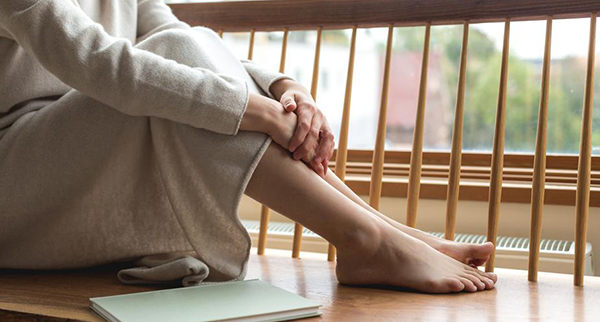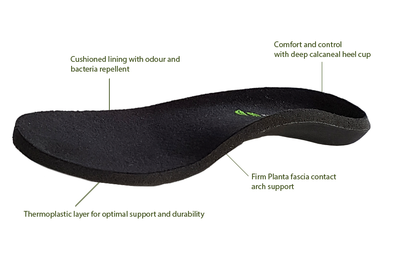Foot Arch and What Support?

The arch of the foot is the area between the toe joints and the heel of the foot.
It’s made up of bones, ligaments and muscles that form an arch.
The dictionary says an arch is:
A curved structure that supports the weight of material over an open space.
So as long as the two sides of the open space are strong and healthy, they can to bear weight on either side of that arch. A bridge spanning a river for example. If the design allows for the span to force weight down on both sides of the arch. This is what holds the arch in place.
The same applies to our feet. If we wear shoes that allow our feet to apply weight to both sides of our foot arch, it should work properly. Unfortunately, though, this isn’t always the case and many of us are just naturally lop-sided which causes the arch to be prone to injury.
What type of foot arch do you have?
Let's find out... it's really simple. Dip your foot into water then stand on a piece of card and see what outline you get.
Do you have flat arches better known as flat feet?
 |
Flat feet naturally roll in quite substantially with movement and standing. Low arches tend to stress more easily in both muscles and joints. Flat footed people potentially have issues with over-pronation, tendonitis, heel spurs, arch pain and knee problems. A strong stabilising shoe is recommended and possibly orthotics. These can help with full body alignment to continue an active lifestyle. Approximately 20% of people have flat feet. |
Do you have medium arches?

|
A normal or medium arch will naturally support your body weight with a slight pronation (rolling inward) when standing still. Potential problems include common issues such as heel pain, ball-of-foot discomfort and tendon soreness as a result of badly fitting shoes. Normal arches need shoes that are firm through the midsole Approximately 60% have medium arches. |
Or do you have high arches?
 |
A high arch is seen as sitting high off the ground and can be seen in the arch-test above as heel and the toes and not much joining them. They are usually supinated (rolling outward) and because our feet take most of the impact, with not much surface area injuries are common. Possible problems with high arches are heel pain, ball-of-foot discomfort and planta fasciitis. Shoes for high arches need to have sufficient cushioning and maximum arch supports, especially where impact sports or standing for extended periods is involved. |
More info on arches
Most importantly, shoes need to fit properly. Where is your arch sitting in the shoes? Does it feel supported and not constrained and not floating in mid-air.
If unsure, contact your podiatrist for analysis of your feet and what shoes are best for you and your daily function.
Note: Wellnessfootwear.com.au does not provide medical advice, diagnosis or treatment. For treatment or medical advice contact your podiatrist.





